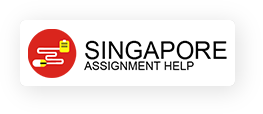Question 2.1
A 24-year old male was arrested for possessing one hundred (100) illicitly made red tablets suspected to contain controlled drug(s). The exhibit was sent to a forensic laboratory for analysis and the report issued was as follows:
The exhibit was found to be one hundred (100) red tablets. The weight of the exhibit was not less than 31.96 grams. A hypergeometric sampling plan was used in the analysis. The analysis shows that at least 90% of the tablets contain ethylene, at a confidence level of 99%.
Ethylone is a Class A Controlled Drug listed in the First Schedule to the Misuse of Drugs Act (CAP. 185).
During the trial, it was found out that for the conclusion to be made, thirty-three (33) tablets were sampled for the hypergeometric sampling. The accused claimed that this was not fair for him, as the other sixty-seven (67) tablets might not even contain any controlled drug. He insisted that all 100 tablets should be sampled for testing and the weight of the pure controlled drug should be given as well.
Based on your understanding of hypergeometric sampling, explain to the accused why it is not necessary:
- to sample all 100 tablets for analysis;
- to quantify the pure weight of the controlled drug.
Looking for Plagiarism free Answers for your college/ university Assignments.
- 7WBS2012 Executive Career Development Assignment: Career Pathway & Readiness Post-MBA in Education Management
- CVE2322 Gantry Build Prototype Assignment: Sustainable Civil Engineering Model Using Recyclable Materials
- BMG706 Strategic Quality Change Assignment Report: Enhancing Operational Excellence at any Organization
- CVE2323 Structural Analysis Assignment: Matrix Method & STAAD.Pro Evaluation of Frame Systems
- BMK3015 Major Project Assignment: Customer-Centric Design Solutions Using Research & Project Management
- Wellbeing Assignment: University Students’ Perspectives for Improving Mental Health Support
- BCLO001 Business Statistics Assignment: Analysis of Exercise Duration Among Singaporean Students
- BM4364 Customer Experience Assignment: Evaluating CX Practices Through Employee Insights in the Service Industry
- GSFM7514 Accounting & Finance Assignment: SAC Services & MEMC Budgeting and CCID Investment Evaluation
- BM0973 BCRM Assignment: Genting Highlands Case Study for Crisis Response and AI-Supported Recommendations

